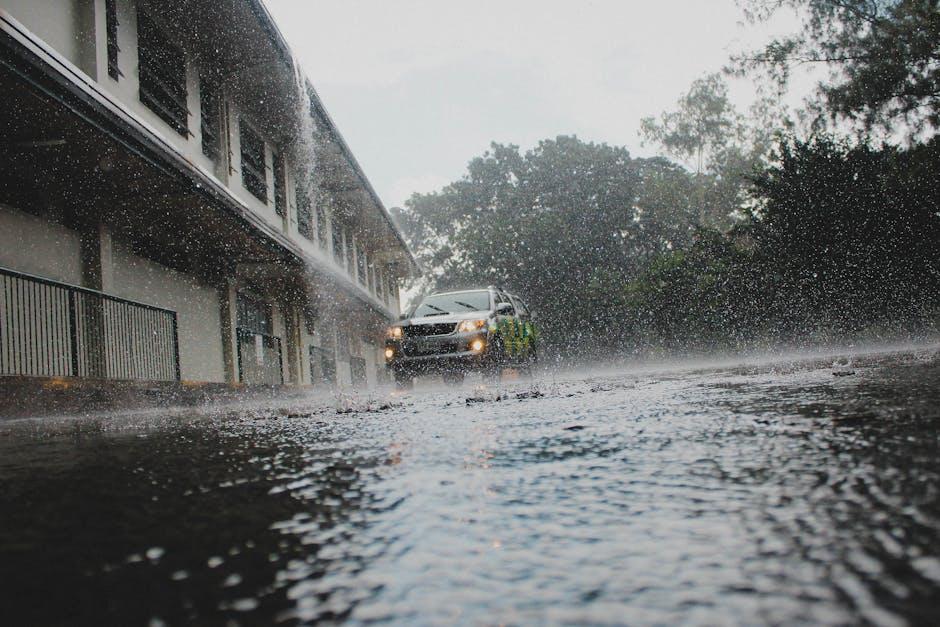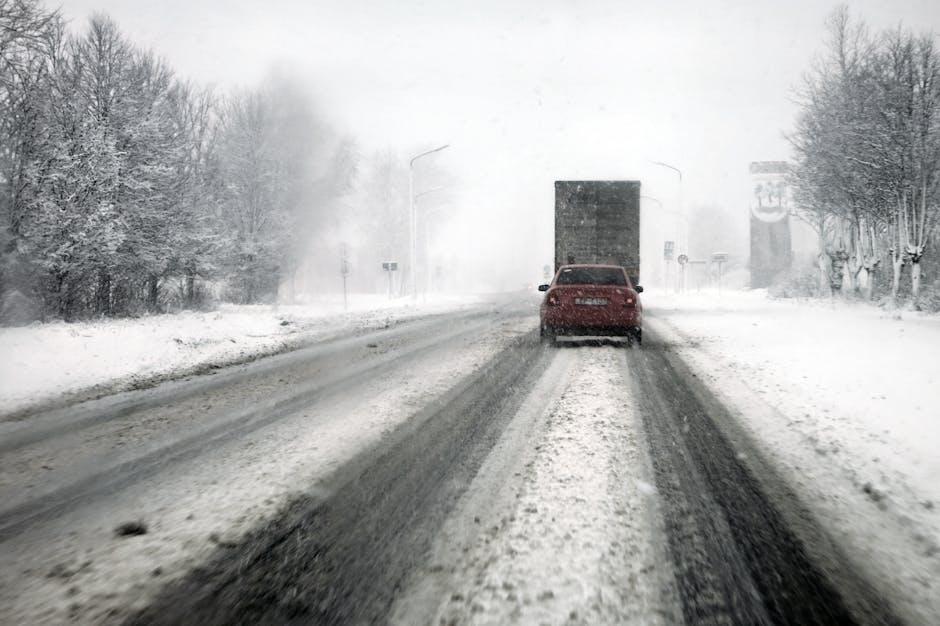When the skies unleash their fury, and the thermometer swings to extremes, your car becomes more than just a mode of transportation—it transforms into a resilient survivor facing nature’s toughest tests. From blistering heatwaves that bake paint and sap battery life, to fierce storms that drench and damage, extreme weather doesn’t just inconvenience drivers; it subtly but persistently takes a toll on every inch of your vehicle. Understanding how these intense conditions impact your car is the first step toward safeguarding your investment and ensuring it keeps running smoothly, no matter what the weather throws your way.
Table of Contents
- Understanding the Impact of Intense Heat on Your Vehicle’s Performance
- Protecting Your Car from Freezing Temperatures and Ice Damage
- How Heavy Rain and Flooding Can Compromise Your Car’s Safety
- Preventing Windstorm Damage and Loose Debris Hazards
- Seasonal Maintenance Tips to Shield Your Car from Extreme Weather
- Choosing the Right Car Accessories to Combat Harsh Environmental Conditions
- Q&A
- In Conclusion

Understanding the Impact of Intense Heat on Your Vehicle’s Performance
When temperatures soar, your vehicle faces challenges beyond the sticky heat you feel inside. The intense heat can accelerate wear and tear on critical components, resulting in decreased engine efficiency and potential overheating. Rubber parts, such as tires and belts, tend to degrade faster under extreme warmth, becoming brittle or losing their grip. Fluids like engine oil and coolant become less effective, risking inadequate lubrication and cooling. This combination can lead to reduced fuel economy and, in worst cases, unforeseen breakdowns during your journey.
To maintain optimal performance, it’s vital to stay vigilant about your car’s condition in hot climates. Consider these key points:
- Check tire pressure regularly: Heat causes air expansion, which may increase tire pressure beyond safe limits.
- Monitor fluid levels: Ensure engine oil and coolant are topped up and replaced as recommended.
- Inspect belts and hoses: Look for cracks or signs of wear heightened by heat exposure.
- Park smartly: Use shaded areas or sunshades to help keep your vehicle’s interior and engine bay cooler.
| Component | Impact of Heat | Recommended Action |
|---|---|---|
| Tires | Increased pressure, risk of blowouts | Check and adjust pressure frequently |
| Engine Oil | Thins out, loses lubrication quality | Use high-temperature resistant oil |
| Coolant | Evaporation, reduced cooling efficiency | Maintain proper levels, flush periodically |
| Belts & Hoses | Dry out and crack | Regular inspection and timely replacement |

Protecting Your Car from Freezing Temperatures and Ice Damage
When temperatures plummet, your car faces unique challenges that can lead to costly damage if not addressed properly. Freezing conditions cause fluids to thicken and battery efficiency to drop, making it harder for your vehicle to start or operate smoothly. To combat these issues, it’s essential to use antifreeze in your cooling system and consider a winter-grade oil. Additionally, investing in a high-quality windshield cover can prevent ice buildup, saving you from risky scraping or using hot water, which can crack the glass.
Protecting your car’s exterior and mechanical components involves simple, preventive steps:
- Keep tires inflated: Cold air causes pressure drops, so monitor tire pressure regularly.
- Apply a weather-resistant wax: This helps protect paint from ice and road salt damage.
- Use rubber floor mats: To shield your interior from snow, salt, and moisture.
- Check battery health: Winter demands extra power—replace weak batteries before the freeze.
| Car Part | Winter Care Tip |
|---|---|
| Windshield | Use ice scraper & cover |
| Engine | Check antifreeze levels |
| Tires | Maintain proper pressure |
| Battery | Test and replace if needed |

How Heavy Rain and Flooding Can Compromise Your Car’s Safety
When your vehicle is exposed to heavy rain and flooding, several critical systems can be affected, potentially putting your safety at risk. Water intrusion can cause the electrical wiring to short circuit, impacting essential functions like headlights, windshield wipers, and braking sensors. Additionally, flooded engines can suffer from hydrostatic lock, which compromises engine performance and may cause irreversible damage. The tires, essential for traction and control, lose effectiveness on water-logged roads, increasing the chances of hydroplaning and collisions.
It’s important to recognize the subtle warning signs that flooding has impacted your car’s safety components. For instance, foggy or dimming headlights, unusual engine noises, or a spongy brake pedal might indicate water damage. Consider this quick checklist to assess risk factors after driving through heavy rain or flood-prone areas:
- Electrical system diagnostics: Inspect fuses and replace corroded connections.
- Brake performance test: Ensure ABS and brake sensors respond correctly.
- Engine oil check: Look for murky or milky oil that signals water contamination.
- Tire tread and pressure: Verify optimal grip for wet conditions.
| Component | Potential Issue | Safety Impact |
|---|---|---|
| Electrical System | Short Circuits | Loss of Lighting and Controls |
| Engine | Hydrostatic Lock | Engine Failure |
| Brakes | Water Ingress | Reduced Braking Efficiency |
| Tires | Reduced Traction | Increased Risk of Hydroplaning |

Preventing Windstorm Damage and Loose Debris Hazards
When towering gusts threaten to turn your car into an unintentional target, taking proactive steps is crucial. Secure your surroundings by anchoring loose items such as trash bins, garden tools, and outdoor furniture that could become airborne projectiles. If you’ve got a garage, use it—this sheltered spot can be a fortress against flying debris, minimizing dents, shattered glass, and paint scratches. Don’t forget to routinely check your vehicle’s tires and wipers, as a well-maintained car withstands harsh winds more effectively.
Planning ahead is half the battle, so consider these preventative measures for keeping your vehicle safe during a windstorm:
- Park away from trees, billboards, or power lines that might fall
- Reinforce your garage door or invest in windproof car covers
- Keep an emergency kit accessible inside your car, including a flashlight and first aid supplies
- Stay updated on local weather alerts to time your parking and driving accordingly
| Risk | Prevention |
|---|---|
| Flying debris causing dents | Use a thick, windproof cover; park indoors |
| Tree branches falling | Avoid parking under large trees; trim branches beforehand |
| Damage from loose objects | Anchor or bring objects inside before the storm |

Seasonal Maintenance Tips to Shield Your Car from Extreme Weather
Protecting your vehicle against seasonal extremes involves targeted upkeep tailored to the challenges each season brings. In chilly winters, battery capacity and tire tread become critical—cold saps battery strength while icy roads demand superior traction. Conversely, summer’s scorching sun can deteriorate paint and cause tires to overinflate. Regular checks of fluid levels, tire pressure, and battery health form the cornerstone of vehicle resilience. To further safeguard your car, consider winterizing with antifreeze blends and summer-proofing by ensuring your air conditioning system is in top shape.
Implementing simple but strategic maintenance tasks can dramatically extend your car’s lifespan and performance. Here are essential habitual checks you can integrate seamlessly:
- Winter: Inspect battery terminals and clean corrosion.
- Spring: Replace wiper blades and check for leaks from melting ice.
- Summer: Monitor coolant levels and tire pressure regularly.
- Fall: Check brakes and ensure headlights work properly for early dusk.
| Season | Key Maintenance Focus | Impact |
|---|---|---|
| Winter | Battery, Tires | Prevent cold start failures, improve grip on icy roads |
| Spring | Wipers, Undercarriage | Clear melted debris, maintain visibility |
| Summer | Cooling Systems, Tires | Stop overheating, prevent blowouts |
| Fall | Brakes, Lights | Ensure safety in low-light, wet conditions |

Choosing the Right Car Accessories to Combat Harsh Environmental Conditions
To effectively shield your vehicle from nature’s harshest challenges, selecting the right accessories is essential. Consider sunshades and UV protectant sprays to preserve your dashboard and seats from sun damage and fading. Meanwhile, heavy-duty floor mats and all-weather seat covers offer protection against dirt, mud, and moisture during rainy and snowy seasons, prolonging your car’s interior lifespan. Don’t overlook the benefits of temperature-regulating car covers that safeguard the exterior paint from intense heat and frost alike.
Investing in durable, weather-resistant add-ons can save you from costly repairs and upkeep down the road. Essential options include:
- Windshield covers to prevent ice buildup and frost
- Heavy-duty wiper blades designed to cut through rain, snow, and grime
- Portable tire inflators for quick fixes during temperature-related pressure drops
| Accessory | Purpose | Weather Benefit |
|---|---|---|
| UV Protected Seat Covers | Protects upholstery | Prevents fading & cracking in sun |
| All-Weather Floor Mats | Protects carpet | Repels water, mud, salt |
| Thermal Car Cover | Protects exterior | Guards against frost & heat |
Q&A
Q&A: How Extreme Weather Affects Your Car
Q1: Can extreme heat really damage my car?
A1: Absolutely. Intense heat can warp tires, degrade rubber seals, and cause your engine to overheat more easily. The sun’s UV rays also fade paint and crack dashboards, turning your cool ride into a baked-up beast.
Q2: What about cold weather—does freezing temperatures wreak havoc on my vehicle?
A2: Cold snaps can be just as tough. Freezing temps thicken your engine oil, strain the battery, and may cause tires to lose pressure. Ice and snow can rust body panels and clog important parts if salt is used on roads.
Q3: How do heavy rains and flooding impact cars?
A3: Water intrusion is a silent enemy. Flooded electrical systems, damaged engines, and corroded components often follow heavy rains. Plus, slick roads increase accident risks, putting your car and safety on the line.
Q4: Are storms and strong winds a threat to my car?
A4: Definitely. High winds can hurl debris that dents your paint or breaks windows. Falling branches and flying objects pose risks—even a scratch can lead to costly repairs.
Q5: Can I protect my car from extreme weather effects?
A5: Yes! Regular maintenance, timely inspections, and weather-specific care go a long way. Use sunshades, park in garages or covered areas, switch to winter tires, keep fluids topped, and wash off road salt promptly.
Q6: Is my car insurance helpful when weather takes a toll?
A6: Many comprehensive policies cover weather-related damage, but coverage varies. It’s wise to check your plan and consider add-ons for protection against floods, hail, and storms.
Q7: Why does climate awareness matter for car owners?
A7: Understanding how weather shapes vehicle wear helps you adapt maintenance and driving habits. This not only extends your car’s life but also keeps you safer on unpredictable roads.
This Q&A sheds light on how Mother Nature’s extremes challenge your car—and what you can do to keep rolling smoothly no matter the forecast.
In Conclusion
As the skies shift and the seasons turn more unpredictable, our cars stand as silent witnesses to nature’s extreme moods. From blistering heatwaves to bone-chilling freezes, understanding how these forces impact your vehicle is not just savvy—it’s essential. By staying informed and proactive, you can help your car weather the storm, ensuring that when the skies clear, your ride is ready to roll on, resilient and reliable. After all, in the dance between man, machine, and nature, knowledge is the best shield against the elements.
